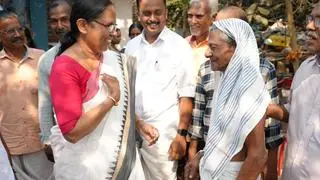The 45-year-old Chief Minister of Maharashtra, Devendra Fadnavis, will complete one year in office on October 31. In spite of multiple hurdles from within and outside the government, Fadnavis has managed to keep his government afloat. In an interview with BusinessLine he shared his vision for the agriculture and industrial development of the State. Excerpts:
Your government’s initiative of rainwater conservation — Jalyukt Shivar — has created additional supply of 24,000 million cubic feet (TMC) of water in the State. What is the impact of this programme on the farming community?
Last year when we came to power, there was a drought in 24,000 villages in the State. This year also there is 50 per cent water deficit and 14,000 villages are under drought. The agrarian crisis is deep in the State. We have a long-term strategy based on access to irrigation and power supply for water pumps.
Jalyukt Shivar is a part of that strategy, which has managed to create, distribute sources of water for agriculture and drinking purposes. In about 6,200 villages in Maharashtra, works such as cleaning, repairing, desilting and construction of new water tanks, farm ponds and other water bodies have increased the total area under cultivation from 17 to 20 per cent. Today the conserved water can provide assured irrigation to six lakh hectares.
On this programme we only had to spend about ₹1,400 crore, which included a grant of ₹300 crore from the Centre. Conventional methods such as big dams would have cost 10 times more money and at least eight years of construction work for bringing six lakh hectares under irrigation.
About 1,500 km of rivers and rivulets have been deepened and widened under this programme.
The Jal Yukta Shivar is definitely a game changer for the State. Experts in the water conservation movement such as Anna Hazare and Rajendra Singh have appreciated our efforts.
But all this is a waste if the farmers do not get power in the fields to run their pumps…
Some of the farmers who had committed suicide had said in their suicide note that they had paid for the water pump connections but they never materialised. Therefore this year one lakh connections have been provided to farmers and by June 2016, power connections will be provided on demand.
The mono-cropping pattern is a major factor in farmer suicides. Adequate water and power supply will help farmers migrate to multi-crops.
Why are you opposed to loan waivers for farmers?
Historically, in Maharashtra, it has been proven that loan waiver works for institutions and not for farmers. I have read what the CAG has written in its report, which has been tabled in the State Assembly. It states that loan waiver has not benefited the farmers.
Secondly, in Maharashtra, if you look at the loan disbursement to farmers, 50 per cent of farmers have never got a loan from an institution or a lending body. So, their loans cannot be waived as they are outside the scheme. And those who are already empowered get the benefit of a loan waiver.
Instead of empowering the institutions, if you put some money into the pockets of farmers through agriculture investments, it will benefit them more. That would create a capacity in them to repay loans. That is our basic idea.
If you see the credit scenario in Maharashtra, the district cooperative-backed network was very strong and they were providing loans. You won’t find commercial or nationalised banks having exposure in agriculture or lending to farmers.
But in the last four-five years, due to corruption, these banks have collapsed. There are 12 banks — three have totally collapsed and nine have no liquidity. Therefore we provided them liquidity to lend.
What is the progress on smart cities in Maharashtra?
As of now, we have appointed consultants for preparing master plans for every city. Based on that plan, we’ll decide on our interventions. Essentially, interventions will be in infrastructure, building communities etc which will make the city smart.
The infrastructure planner should also understand what it is performing and why it is performing. So in the first stage, we'll plan out everything and once the plan is ready, we’ll have an investment strategy. Some funding will come from the Centre, some will come from the State government. Through capacity building, some amount will be generated from the corporations and the rest will be debt financed. The planning has already started. We have consultants for each city. For Nagpur we have appointed E&Y.
On the one hand, China’s Foton Motors has committed $500 million for an automobile factory in Pune. But that project is yet to see the light of day. While recent entrant Taiwan’s Foxconn has already committed $5 billion investment in Maharashtra, their land acquisition process is much faster. Why this asymmetry?
The land acquisition issues of Foton have been sorted out. But it also should be kept in the mind that the company also had changed its plans for manufacturing operations. From making a particular type of vehicle it has now decided to make commercial vehicles. This changeover has taken some time but their manufacturing will start soon.
In Foxconn’s case, CEO Terry Gou made quick decisions. In fact even before their units were built, they had leased industrial units and recruited 5,000 persons. By March 2016, their first equipment will start rolling out.







Comments
Comments have to be in English, and in full sentences. They cannot be abusive or personal. Please abide by our community guidelines for posting your comments.
We have migrated to a new commenting platform. If you are already a registered user of TheHindu Businessline and logged in, you may continue to engage with our articles. If you do not have an account please register and login to post comments. Users can access their older comments by logging into their accounts on Vuukle.